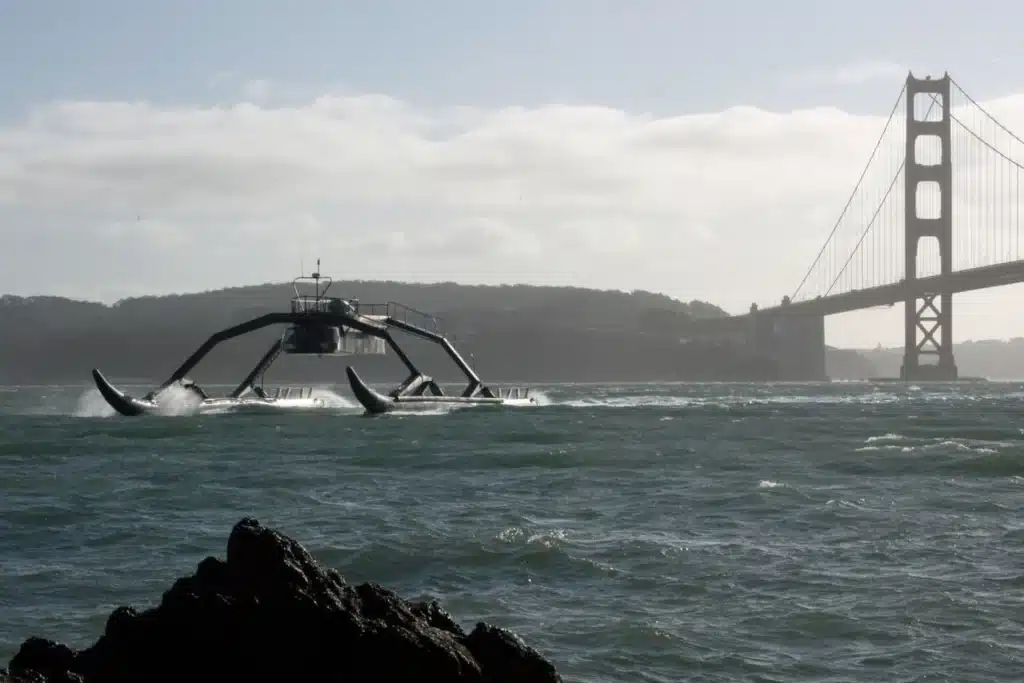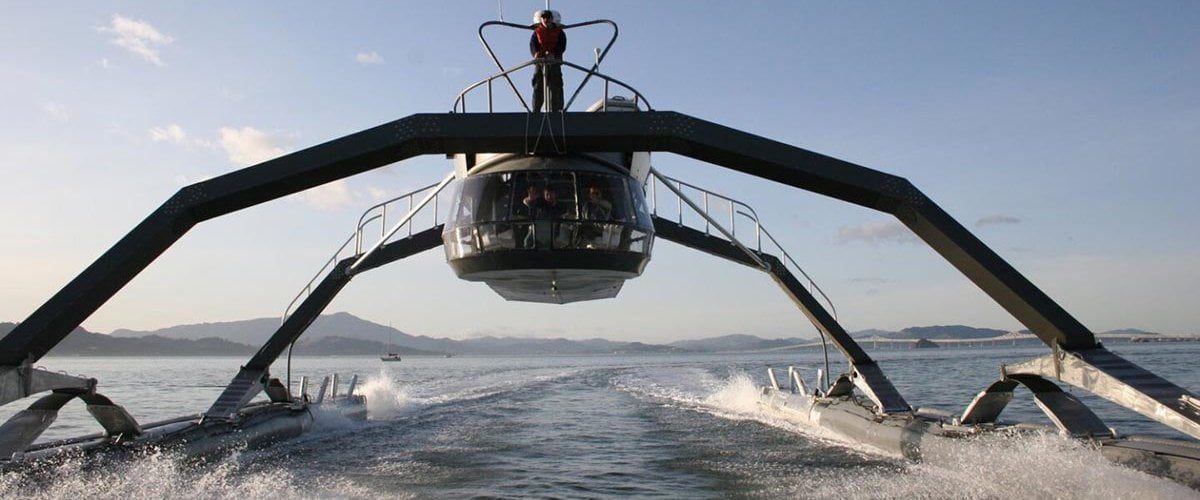Company Marine Advanced Robotics presented the Wave Adaptive Modular Vessel (WAM-V) surface vehicle. Technically it is a modular catamaran with no rigid connections between the hulls. The passenger (or cargo) compartment can therefore also move very high on the water, adapting to all waves in conditions in which other ships would not be able to navigate.
WAM-V is intended for defense and ocean mapping projects.
There is no more "sprung" than this

The WAM-V employs ingenious springs, shock absorbers and ball joints to dampen waves, allowing the entire structure to be more stable in pitch and roll. All this helps the ship perform critical tasks in difficult sea conditions. The ship's nacelles are equipped with engines capable of accelerating it up to 55 kilometers per hour (30 knots). Depending on the tasks performed, WAM-V can be equipped with both internal combustion engines and diesel fuel tanks, and electric motors with batteries.
A modular spider on the water
The strength of the ship? The modularity of her. The WAM-V has a fully modular, removable and reconfigurable body. This means operators can quickly replace the propulsion system, change the load or install new sets of sensors and specialist equipment. The legs and main cabin of the WAM-V can also be disassembled for shipping, and fit into a standard container.
Also in terms of control WAM-V is very versatile: it can be manned or completely autonomous, with specific software for different use cases. When used for ocean mapping, the vessel is controlled by machine learning algorithms and, in search mode, transfers control to a person. According to the startup, the WAM-V is also suitable for search and rescue operations and support for warships.
The lightest option, a 2,4 meter long robotic ship, can perform tasks in tiny spaces, needing just 15cm of water to move.
The future in the water is increasingly multifaceted.


